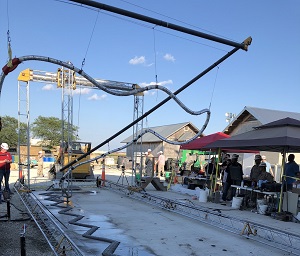 Friday, April 19, 2024
Friday, April 19, 2024  Friday, April 19, 2024
Friday, April 19, 2024 
Got news? Next submission deadline is Friday at 5:00 p.m.
Click here to submit YOUR news

We’ve all heard of 3D printing by now – from prosthetic limbs to car parts, 3D printers are creating a growing number of products, and the value of this market is set to reach $26.5 billion in 2021. But out of the vast benefits this tech offers, 3D-printed homes are perhaps one of the most significant, as they have the potential to solve many problems the architecture and construction industry face today.
They could lead to cost reduction, new designs, less pollution, and personalized objects designed by consumers themselves. 3D-printed homes could be used to shelter homeless people and perhaps even to build a base on Mars. This technology still has to overcome many challenges, though, but it will undoubtedly play a huge part in the future of architecture.
3D printers construct homes by adding layer after layer of a special ‘ink’ that can be made out of a number of materials, such as concrete, fibers, and sand. After that, workers can add windows, electrical wiring, and other necessary components. The startup Apis Cor, for instance, 3D-printed a 37 m2 house in Russia for $10,000, demonstrating the many benefits of this approach. And 3D printers use cement more efficiently than conventional construction methods, helping to reduce its negative environmental impact. Moreover, as machines do most of the work, companies save money on labor.
One example is the world’s first 3D-printed office building in Dubai made by a six-meter-high, 36-meter-long, and 12-meter-wide printer. The project was completed by 17 workers in 17 days and led to cost savings of 50 per cent in labor alone, compared to similar objects built in traditional ways. Aside from this, the Yhnova housing project in France demonstrated that 3D-printed homes could cost consumers 20 per cent less money than similar, non-printed homes.
Watch the video and learn more about the benefits of joining Construction Links Network – the peer-to-peer network sharing platform for the construction, building and design community.
Ideal for YOUR Press Releases | Project Updates | New Appointments | Awards & Milestones | Company News | New Products/Services | Brochures | Videos | Infographs | Blog Sharing | Events and More